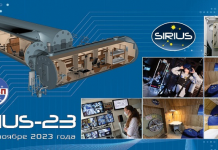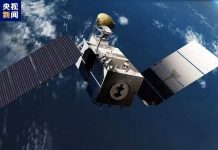Last updated on December 8th, 2022 at 03:13 pm
NASA assembled and tested satellite for the first bioexperiment in deep space
BioSentinel’s mission is one step closer to flying. The assembly and series of tests of the mini-satellite of the CubeSat 6U format (10 × 20 × 30 cm with a mass of about 14 kg) have been completed. A team of NASA scientists from the Ames Research Center in Silicon Valley is completing preparations for sending the device to the Kennedy Space Center in Florida for subsequent launch …

The sentinel flight will pass the Moon and enter orbit around the Sun. It is one of 13 mini-satellites CubeSat, which will be launched this year aboard Artemis I – the new US lunar program’s first mission. For example, Quality Assurance Engineer Austin Bowie at the Ames Research Center examines the BioSentinel solar cell in an anechoic chamber after completing a test to determine the effect of electromagnetic radiation from a ship on its systems:
BioSentinel will conduct the first long-term biological experiment in deep space. His six-month scientific research will be devoted to studying the long-term effects of radiation from deep space on the DNA repair of a living organism – budding yeast. Pictured is one of BioSentinel’s microfluidic maps that will be used to measure the effects of radiation on yeast cells housed in tiny fluid compartments. The microfluidic system includes a dye that reads yeast cells’ activity, changing color from blue to pink.
Because human and yeast cells share many of the same biological mechanisms, including repairing damaged DNA, BioSentinel’s experiments may help better understand the radiation risks associated with prolonged human stays in deep space. Here, scientist Lauren Liddell uses a microscope to count yeast cells to make sure the correct number of cells are loaded into the BioSentinel microfluidic equipment:
Because human and yeast cells share many of the same biological mechanisms, including repairing damaged DNA, BioSentinel’s experiments may help better understand the radiation risks associated with prolonged human stays in deep space. Here, scientist Lauren Liddell uses a microscope to count yeast cells to make sure the correct number of cells are loaded into the BioSentinel microfluidic equipment:
BioSentinel Lead Mechanical and Structural Engineer Abraham Rademacher, left, Lead Integration and Test Specialist Vasile Manolescu, center, and Electrical Engineer James Milk deploy the solar array and test the suspension movement on a spaceship in the cleanroom of the Ames Research Center. The test is designed to ensure that the spacecraft’s solar panels will operate normally in flight. The Ames Research Center has been studying microbes in low-Earth orbit for 15 years using mini-satellites in the CubeSat format, and BioSentinel will be the first example of a biological experiment in deep space:
Integration and Test Engineer Dan Rowan works on the internals of the CubeSat BioSentinel in the cleanroom at the Ames Research Center. We are talking about radio communications, the battery, and other spacecraft subsystems, including the aforementioned BioSensor and a radiation detection device. The latter measures and characterizes the radiation environment – its results will be compared with yeast’s biological response.



